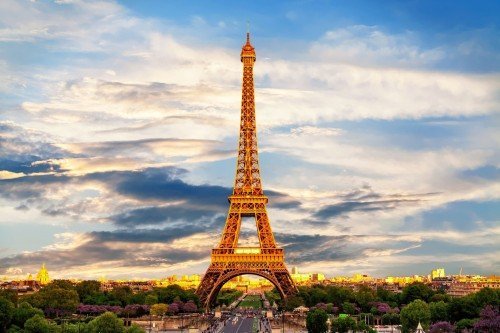Paris,France

Pont Neuf
Situated in the Seine in the centre of Paris, the ship-shaped Île de la Cité is the historical heart of the city. It is about 10 streets long and 5 wide. Eight bridges link it to the riverbanks, and a ninth leads to the Île Saint-Louis, the smaller island that lies to the southeast. The westernmost bridge is the Pont Neuf (New Bridge), which was built from 1578 to 1604. Despite its name, it is the oldest of the Paris bridges (others predate it but have been rebuilt). Its sturdiness has become axiomatic: Parisians still say that something is “solid as the Pont Neuf.” The bridge, supported in the middle by the tip of the island, extends five arches to the Left Bank and seven to the Right. The parapet corbels are decorated with more than 250 different grotesque masks. The parapet curves out toward the water at each bridge pier, forming half-moon bays along what was the first sidewalk in Paris; in these bays street vendors set up shop. For 200 years this bridge was the main street and the perpetual fair of Paris. Although the structure undergoes regular repair, in the main Pont Neuf as it exists today is the original bridge.
The palace of the early Roman governor (now the Palace of Justice) was rebuilt on the same site by King Louis IX (St. Louis) in the 13th century and enlarged 100 years later by Philip IV (the Fair), who added the grim gray-turreted Conciergerie, with its impressive Gothic chambers. The Great Hall (Grand Chambre), which, under the kings, was the meeting place of the Parlement (the high court of justice), was known throughout Europe for its Gothic beauty. Fires in 1618 and 1871 destroyed much of the original room, however, and most of the rest of the palace was devastated by flames in 1776. The Great Hall now serves as a waiting room for the various courts of law housed in the Palace of Justice. In the adjoining first Civil Chamber, the Revolutionary Tribunal sat from 1793, condemning some 2,600 persons to the guillotine. After being sentenced, the victims were taken back down the stone stairs to the dungeons of the Conciergerie to await the tumbrels, the carts that carried them to the place of execution. The Conciergerie still stands and is open to visitors.
Notre-Dame de Paris
At the eastern end of the Île de la Cité is the cathedral of Notre-Dame de Paris, which is situated on a spot that Parisians have always reserved for the practice of religious rites. The Gallo-Roman boatmen of the cité erected their altar to Jupiter there (it is now in the city’s Museum of the Middle Ages), and, when Christianity was established, a church was built on the temple site. The reputed first bishop of Paris, St. Denis, became its patron saint. The red in the colours of Paris represents the blood of this martyr, who, in popular legend, after decapitation, picked up his head and walked.
By the 21st century, prolonged exposure to the weather and decades of damage from acid rain had compromised much of the cathedral’s exterior stonework, and the French government spent millions of euros annually on restoration and maintenance. In April 2019, during one such renovation project, Notre-Dame was ravaged by a fire that destroyed its roof and caused its iconic steeple to collapse. Like all cathedrals in France, Notre-Dame is the property of the state, although its operation as a religious institution is left entirely to the Roman Catholic Church.